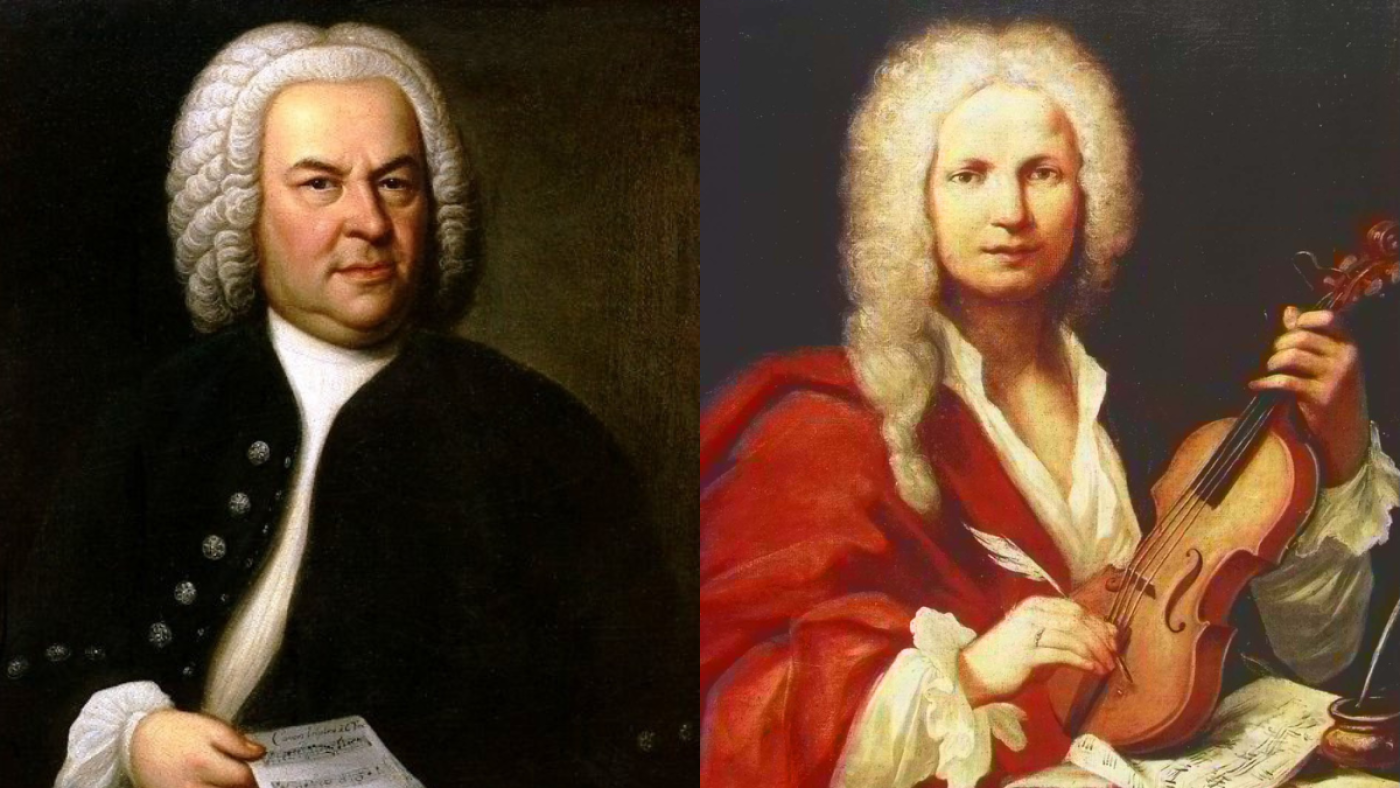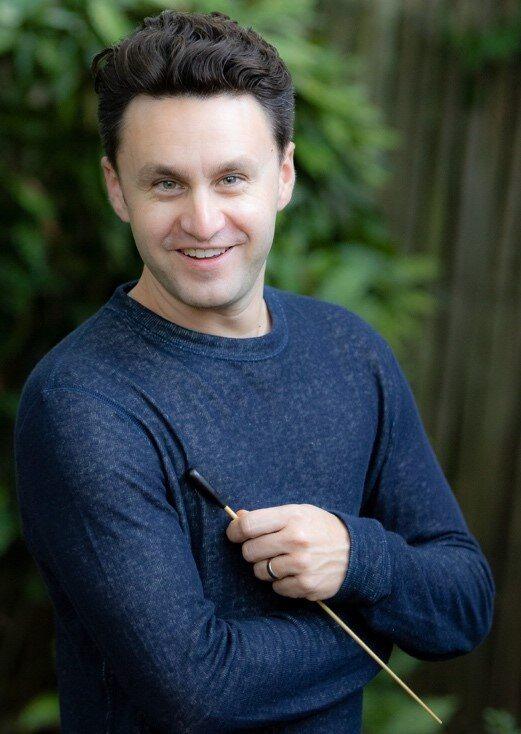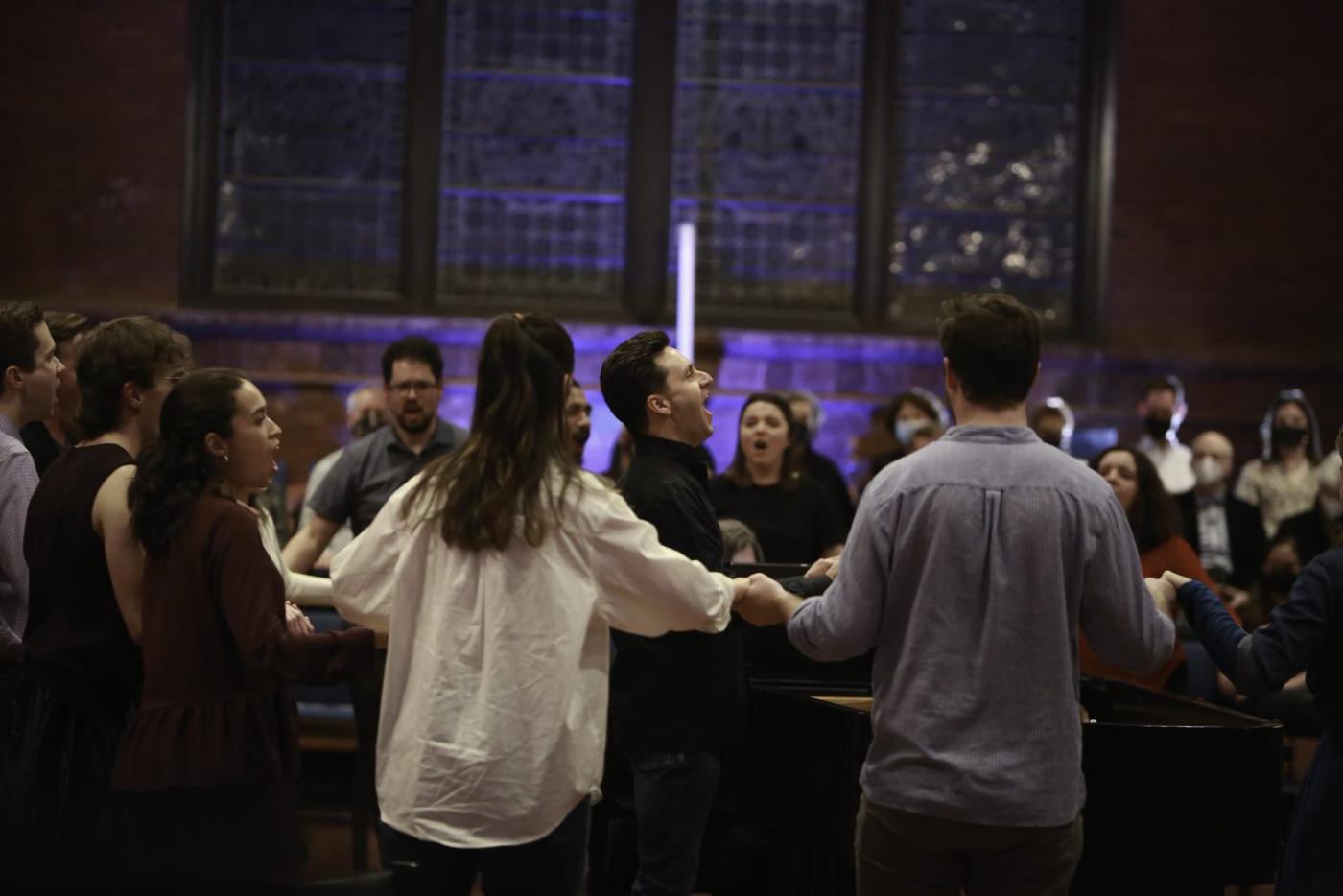Fans of Baroque musical sounds of the season are in for a real treat this year in the nation’s capital. On December 16, 17, and 18, The Thirteen Choir & Orchestra, one of the Washington area’s most versatile and creative ensembles, will perform their Gloria! program, featuring the Orchestral Suite #1 of JS Bach, as well as Bach’s Magnificat and Antonio Vivaldi’s Gloria in D major. I got the chance to ask The Thirteen’s founder and artistic director, Matthew Robertson, for a conductor’s eye view on this program of perennial Baroque favorites and performing Early Music.
Matthew Dayton: In recent years you’ve won an award and been recognized specifically for your creative programming. Could you talk a bit about your general approach to programming and choosing pieces? What kinds of goals or overall visions guide that creative process?
Matthew Roberston: In planning The Thirteen’s programs, I am first guided by our mission to perform music spanning many times and cultures, inspiring new audiences and fostering empathy in our communities. This mission has led me to address many of the critical issues of our time - including systemic racism, housing insecurity, climate change, migration, and violence - in our programming. Over the course of our concert seasons, I also look to provide our audience a balanced diet: works from all time periods, works by underrepresented composers, masterworks, musical miniatures, works of various scale, and, of course, audience favorites.
I believe that the art that The Thirteen and I make must reflect our highest values. With all that divides, music serves to unite; that our communities are strongest when we come together around song.
MD: Can you tell us the story of how you came to this particular program?
MR: These past nearly three years have been difficult for so many in our society, and we could all use some cheering up! I can think of no better way for our community to come together around song during the holiday season than with these three jubilant, well-loved masterworks: Bach’s Magnificat and Orchestral Suite No. 1, and Vivaldi’s Gloria.
MD: You’re in the midst of your ‘Vanguard’ season, all about excellence and innovation. Could you tell us what aspects of the masterpieces on this program most embody those ideas to you?
MR: I’m struck that neither Vivaldi nor Bach set much text in these large, celebratory works. Indeed, many other composers have set the exact same texts in a tenth the amount of time! But what Bach and Vivaldi achieve are sets of musical miniatures that explore the holiday story in song, with each line of text set with utmost sensitivity to its meaning. And while these two masterworks might diverge in national style, they both share intimate duets and trios, time-suspending solos, and driving choruses. In a very different style – that of the French court – Bach’s Orchestral Suite in C Major is no less of a revolutionary work, synthesizing German and French styles to make a celebratory and elegant opus. In this way, [our concert program] Gloria! celebrates the holiday story in three national musical languages: French, Italian, and German.
MD: All three of the pieces on this program have been very popular and familiar to classical music audiences for a long time now; what do you particularly love bringing out in them in your interpretations that we, the audience, should especially listen for?
MR: Working with The Thirteen is like driving a Lamborghini; there are numerous musical decisions I can make with these spectacular musicians that would fall flat with many groups. As a conductor and organist, by now I’ve conducted or played much of J.S. Bach’s music. While the impact of Bach’s music cannot be overstated, our field dramatically underestimates the degree to which ornamentation is an inextricable element of his music. In my performances of Bach’s Magnificat and Orchestral Suite No. 1, we’ll ornament as I think Bach may have wanted. So, keep your ears tuned for all kinds of ornaments – trills, mordents, appoggiatura, schleifers and more – that bring new life to this tremendous music.
MD: Seeing both orchestral and vocal works by Bach on this program reminds me that it’s often remarked how Bach had a penchant for treating instruments like voices and voices like instruments. What’s been your experience with that idea?
MR: Almost always, Bach compensates for the remarkable virtuosity that he requires from his performers by writing in an exceptionally idiomatic manner. [‘Idiomatic’ meaning: designed to highlight the musical things that each particular instrument or voice range does best]. His Magnificat and Orchestral Suite No. 1 are case studies in idiomatic composition. That said, throughout the Baroque, music was composed to serve the text, and so, as performers, we often articulate instrumental passages to reflect the text that it imitates.

MD: On the instrumental side of things, could you talk about the orchestra’s use of period instruments? How would you describe that period-instrument sound, its strengths and challenges for the players and the ensemble?
MR: In addition to the academic benefits to using period instruments, employing period instruments creates a more red-blooded sound that is at once rousing and intimate.
Basso continuo is the most important feature of the music of Bach and Vivaldi, is the keystone of the Baroque period in music, and is the cipher to understand how Baroque performance practice differs from modern. Basso continuo is the bass (lowest) line, providing the harmonic structure and rhythmic groove of the music. In the Baroque – and in our performances – many instrumentalists play from this single line of music: cellos, bass (which play an octave lower), and bassoon all play the notes as written; organ, harpsichord, and theorbo (picture a giant guitar or archlute) improvise complete chords that are guided by the bass line. From this simple bass line emerges the rhythmic drive and harmonic underpinnings of all works on this concert, and of nearly every work from the Baroque. In many ways, this makes performing Baroque music much closer to performing Brubeck than it is to performing Brahms.
For these performances, the pitch will be one half step lower than the modern standard; we’ll perform at A=415 rather than A=440. And we’ll use an unequal temperament which will allow our musicians to achieve tuning that is more concordant than modern instruments can achieve; yet this requires us to pay particular attention to it. These decisions around tuning and pitch reflect our understanding of the practice of the Baroque.
Our audience will also notice many differences between period instruments and modern. To name a few: a.) period Baroque violins typically employ shorter bows and their instruments have shorter necks; b.) all of our string instrumentalists’ strings use animal gut strings rather than steel-wrapped nylon, c.) wind instruments feature more wood than their modern counterparts, d.) brass instruments feature fewer or no valves and keys. These differences combine to create a new, powerful, and exciting sound.
The Thirteen Choir & Orchestra will perform their Gloria! Program on Friday, December 16th at 7:30pm at Church of the Ascension and Saint Agnes in D.C.; Saturday, December 17th at 7:30pm at St. Paul’s Lutheran Church in D.C.; and Sunday, December 18th at 5:00pm at Bradley Hills Church in Bethesda, MD.
PBS PASSPORT
Stream tens of thousands of hours of your PBS and local favorites with WETA+ and PBS Passport whenever and wherever you want. Catch up on a single episode or binge-watch full seasons before they air on TV.

